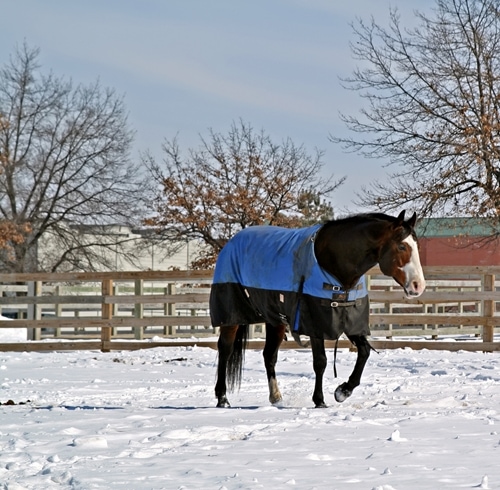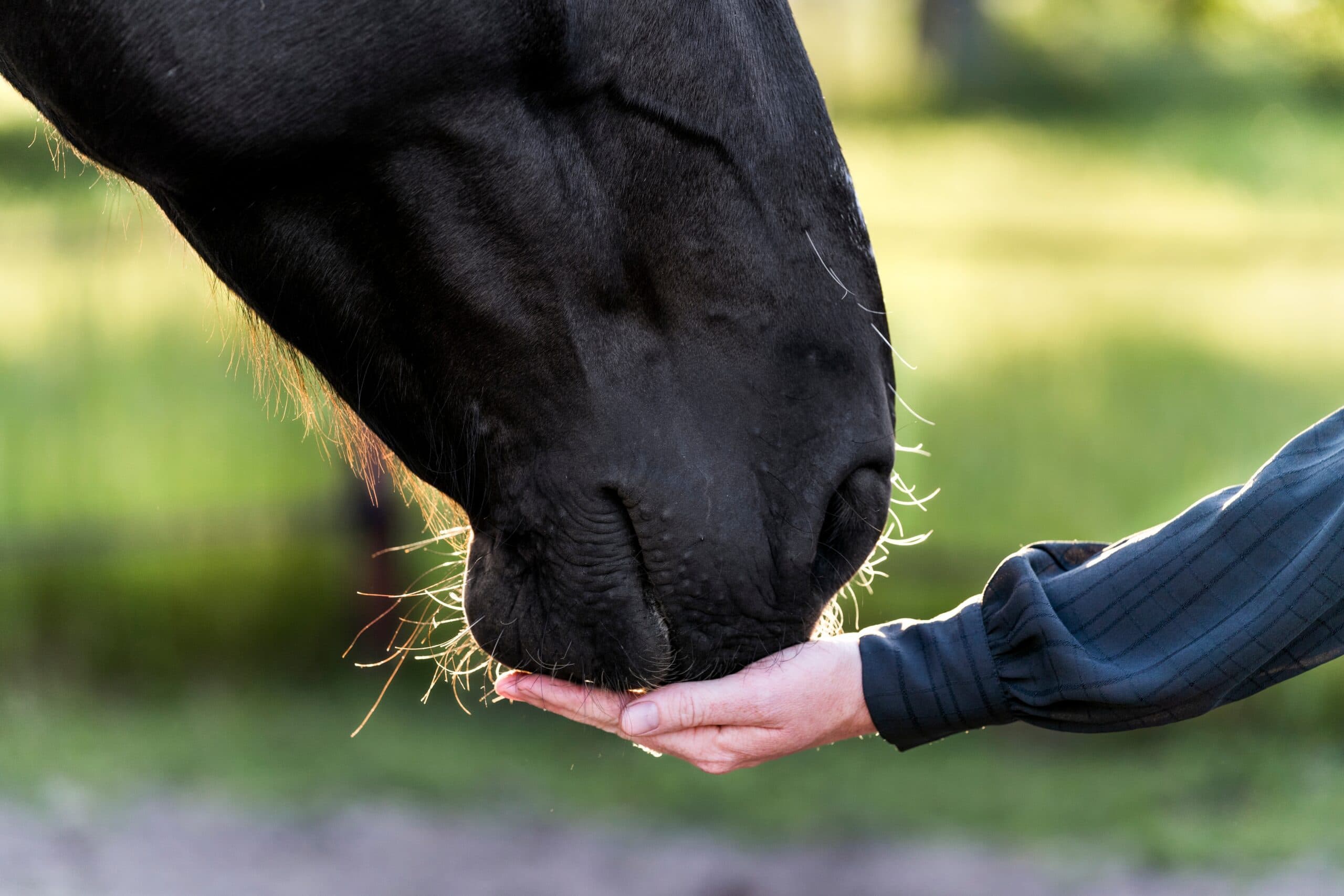When it comes to putting a blanket on one’s horse during winter, not all horse owners agree what should be done. The months November through March may present a chilly time for some riders and horses living in colder climates, so it’s important that equines stay comfortable and warm.
It’s true that horses have an inherent ability to withstand the cold and wind, though they still need shelter or windbreak during this time, in addition to proper cold-season feed and water.
A main reason that owners are wary to use blankets is that the fabric tends to compress a coat’s layers, thereby reducing its insulation. As a rule of thumb, horses that live in environments where temperatures remain above 10 degrees Fahrenheit can manage without a blanket, granted they are stalled or have shelter. Talk to your vet for advice specific to your animal.
But staying warm doesn’t only revolve around a blanket. Feed and nutrition are key factors, as a horse’s body generates body heat through digestion. When a horse digests hay as well as other forage, gut activity warms the body. During the colder months, make sure that your horse has adequate nutrition and access to unfrozen water.
Owners in favor of blankets point out that blanketing helps maintain a short-haired show coat, which reduces body clipping time for those who show during the winter. For performance horses, clipping and blanketing may be necessary to control winter hair growth. Take note that just like humans, horses sweat when exercising, and when that sweat sits on the skin, it may make a horse become cold.
Check out these blanketing tips:
- Use a blanket that is appropriate for the weather conditions of your horse. Take into account the weight and fabric of the material.
- Make sure you have the right blanket for appropriate use. For example, horses that live in snowy elements should wear blankets that are both waterproof and breathable. A blanket that’s not water-resistant will become saturated and make the horse cold.
- Remove the blanket and groom your horse on a regular basis.
- Factor in training days so your horse doesn’t stay in a sweaty blanket.
- Properly clean blankets (most are line-dried).
- Talk with your vet for more information about horse blankets and care throughout the winter.






